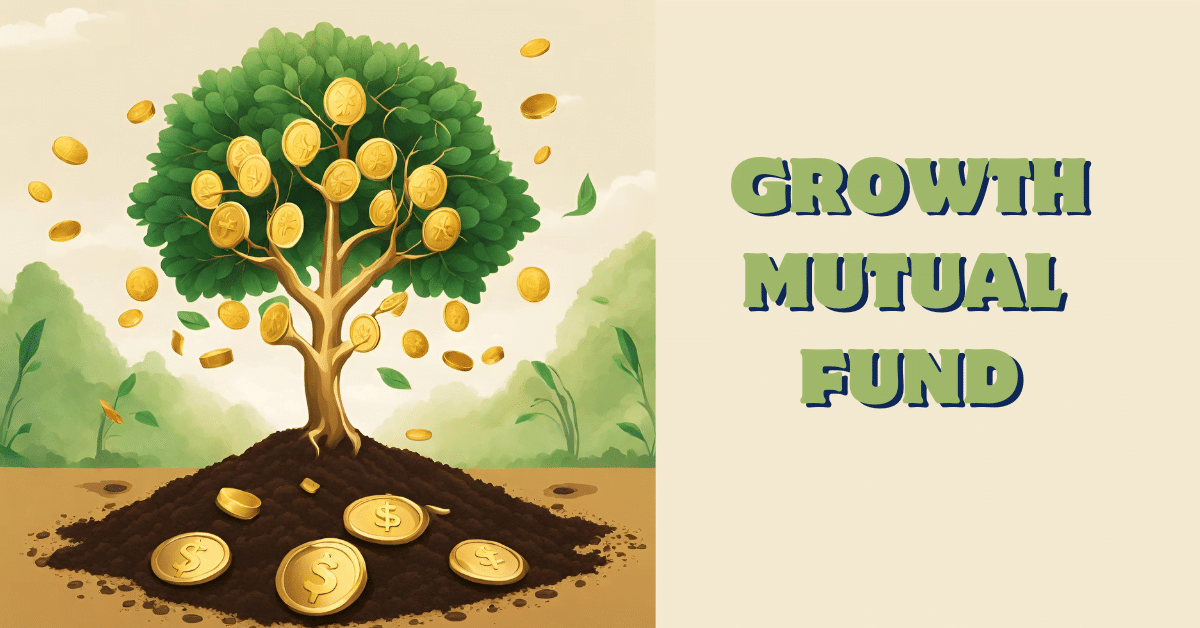Discover the power of growth funds and learn how to boost your wealth with smart investment strategies. Explore key insights, expert advice, and FAQs to pave your path to financial success.
Introduction: Paving the Path to Prosperity
Table of Contents
ToggleIn the ever-evolving world of finance, investment strategies play a pivotal role in shaping our financial future. One such strategy, growth funds, has gained immense popularity for its potential to deliver substantial returns. If you’re looking to invest your hard-earned money wisely, this article is your guide to understanding growth funds, making informed decisions, and ensuring a prosperous financial future.
What Are Growth Funds?
The Basics of Growth Funds
Growth funds, also known as growth stock mutual funds, are a type of investment vehicle that focuses on stocks of companies with a strong potential for future growth. These funds are a part of the larger category of mutual funds, where investors pool their money to buy a diversified portfolio of stocks, bonds, or other securities. Growth funds, in particular, primarily invest in stocks of companies that are expected to experience rapid earnings growth.
Growth funds focus on stocks of companies with high growth potential, making them a popular choice for long-term investors seeking capital appreciation.
Why Choose Growth Funds?
The Appeal of Growth Investing
Investing in growth funds is attractive for several reasons:
- Potential for High Returns: Growth companies often experience significant increases in stock prices, which can lead to substantial returns for investors.
- Long-Term Focus: Growth funds are ideal for investors with a long-term perspective, as they allow your investment to grow over time.
- Diversification: By pooling your money with other investors, you can access a diversified portfolio managed by professional fund managers.
- Expert Management: Professional fund managers make investment decisions, helping to mitigate risk.
- Access to Promising Industries: Growth funds often target industries with innovative and disruptive potential, allowing you to ride the wave of future technologies and trends.
Growth funds offer the potential for high returns and diversification, making them an attractive option for long-term investors.
How Do Growth Funds Work?
Understanding Growth Stocks
To comprehend growth funds, it’s essential to understand the concept of growth stocks. Growth stocks are shares in companies with the potential for above-average revenue and earnings growth. These companies often reinvest their earnings back into the business to fuel expansion and innovation.
Growth stocks are characterized by:
- Strong Earnings Growth: These companies typically show consistent growth in revenue and earnings, indicating their ability to capture market share and generate profits.
- No Dividends or Low Dividends: Instead of paying out profits to shareholders as dividends, they reinvest the earnings to fuel growth.
- High Price-to-Earnings (P/E) Ratios: Growth stocks often have higher P/E ratios, reflecting the market’s confidence in their future prospects.
Key Takeways
- Growth funds focus on stocks of companies with high growth potential, making them suitable for long-term investors seeking capital appreciation.
- Investing in growth funds offers the potential for high returns, diversification, and expert management by professional fund managers.
- Effective strategies for investing in growth funds include having a long-term perspective, practicing dollar-cost averaging, regular monitoring, and reinvesting earnings.
- Risks associated with growth funds include market volatility and the absence of guarantees in investing.
- Growth funds can be suitable for investors with varying amounts of capital, are often a valuable addition to retirement savings, and require careful consideration of your investment goals and risk tolerance.
- Fees associated with growth funds include management fees and expense ratios, which vary among funds.
- Growth funds can be tax-efficient when held in tax-advantaged accounts, but it’s essential to seek professional tax advice.
The Role of Growth Funds
Growth funds are an excellent way to invest in growth stocks without the need for in-depth market research or stock-picking skills. When you invest in a growth fund, your money is pooled with that of other investors, creating a diversified portfolio of growth stocks. This diversification helps spread risk and reduce the impact of individual stock volatility on your investment.
Professional fund managers are responsible for selecting and managing the stocks within the fund, making investment decisions that align with the fund’s growth objectives.
Growth funds simplify the process of investing in growth stocks, offering diversification and professional management.
Strategies for Investing in Growth Funds
Now that you understand what growth funds are and how they work, let’s delve into strategies for investing in these funds effectively.
1. Long-Term Perspective
Growth funds are designed for long-term investors. To reap the maximum benefits, consider holding onto your investment for several years. This allows your money to grow and compound over time, taking advantage of the potential for substantial capital appreciation.
2. Dollar-Cost Averaging
Dollar-cost averaging is a strategy that involves investing a fixed amount of money at regular intervals, regardless of market conditions. This approach helps mitigate the impact of market volatility. When stock prices are low, you buy more shares with the same amount of money, and when prices are high, you buy fewer shares. Over time, this strategy can result in a lower average cost per share.
3. Regular Monitoring
While growth funds are ideal for long-term investments, it’s essential to regularly monitor your investment portfolio. Market conditions and the performance of individual companies can change, and it’s crucial to ensure your investment aligns with your financial goals.
4. Reinvestment of Earnings
Many growth funds offer the option to reinvest dividends and capital gains. Reinvestment can help your investment grow more rapidly over time, as it compounds the potential for capital appreciation.
You can also explore Value Research Online for in-depth investment research.
Risks Associated with Growth Funds
While growth funds offer significant potential for capital appreciation, it’s essential to be aware of the risks involved.
1. Market Volatility
Growth stocks can be more volatile than other types of investments. Their high potential for growth is often accompanied by higher price fluctuations. Investors must be prepared for market ups and downs.
2. No Guarantees
It’s crucial to understand that, like all investments, growth funds come with no guarantees. While they offer the potential for high returns, there is also the risk of losses. Past performance is not indicative of future results.
Conclusion
Growth funds provide an excellent opportunity for long-term investors to harness the potential of growth stocks without the need for extensive market research. By understanding the basics, employing effective strategies, and being aware of the associated risks, you can embark on a path to financial prosperity. As with any investment, it’s crucial to align your investment choices with your financial goals and risk tolerance. Remember that patience and diligence are key to reaping the rewards of growth funds. Invest wisely and secure a brighter financial future.
FAQs: Your Growth Fund Queries Answered
1. Can I invest in growth funds with a small amount of money?
- Yes, many growth funds have low minimum investment requirements, making them accessible to a wide range of investors.
2. Are growth funds suitable for retirement savings?
- Yes, growth funds can be a valuable addition to a retirement portfolio, especially if you have a long investment horizon.
3. How do I choose the right growth fund for my investment goals?
- Consider your risk tolerance, investment time horizon, and financial goals. Research and compare different growth funds to find one that aligns with your objectives.
4. Can I lose money with growth funds?
- Yes, like all investments, growth funds carry the risk of losing money. It’s important to be prepared for potential losses.
5. What fees are associated with growth funds?
- Growth funds typically have management fees and expense ratios. These fees cover the cost of managing the fund. Be sure to understand and compare the fees before investing.
6. Are growth funds tax-efficient?
- Growth funds can be tax-efficient if they are held in tax-advantaged accounts such as IRAs or 401(k)s. Consult a tax professional for personalized advice.






1 Comment
[…] Balanced Funds: These funds maintain a balanced portfolio by investing in both equities and debt instruments. The allocation between equity and debt varies, allowing investors to choose the level of risk they are comfortable with. (Link to Growth Fund) […]